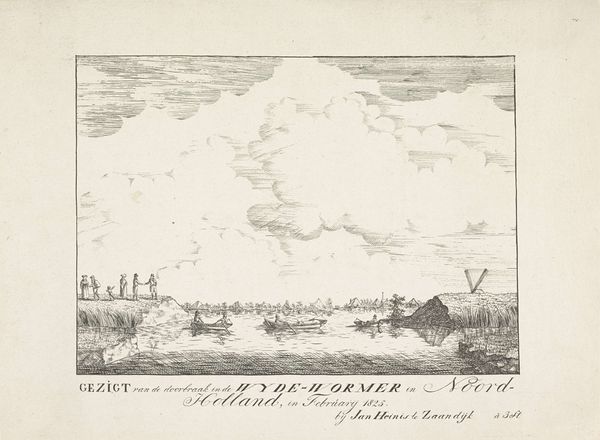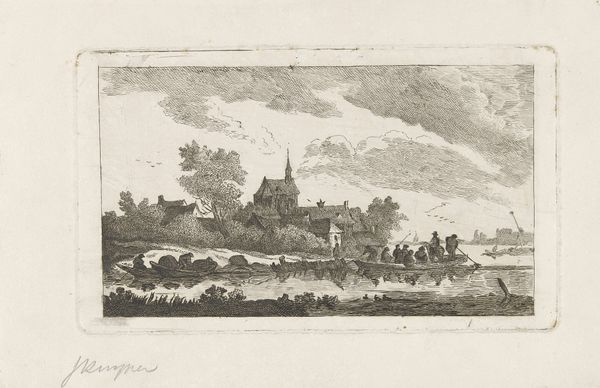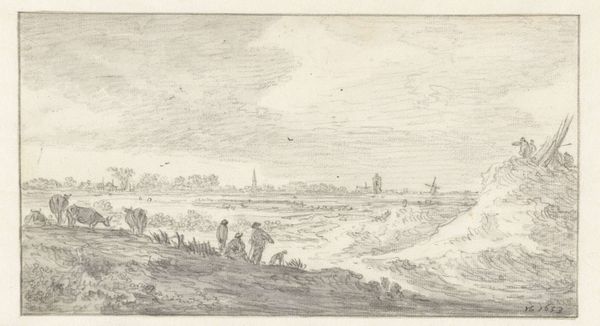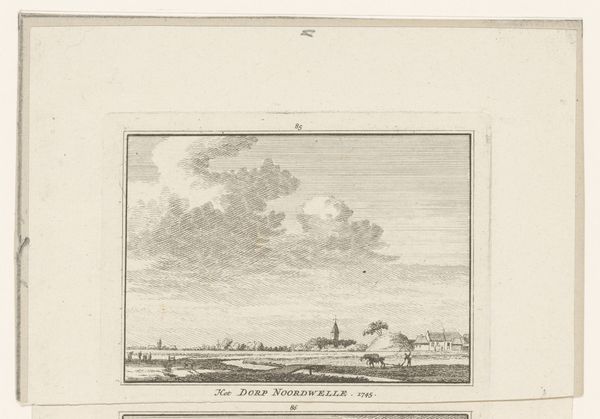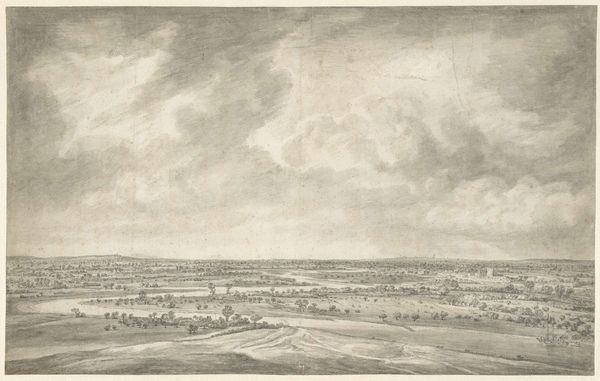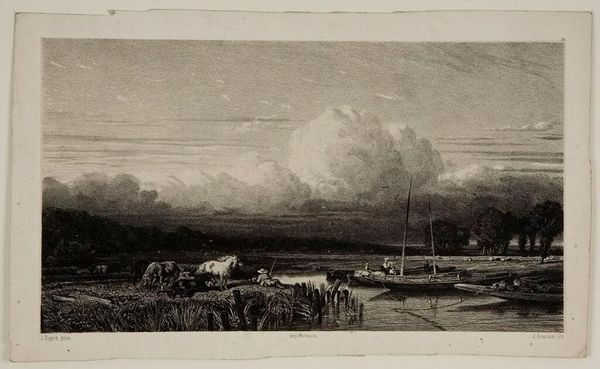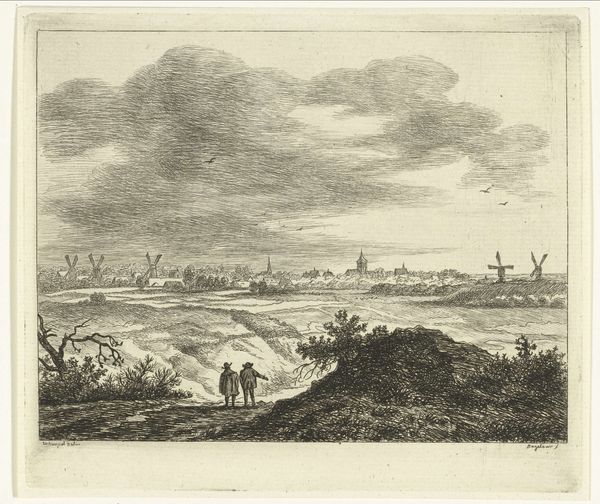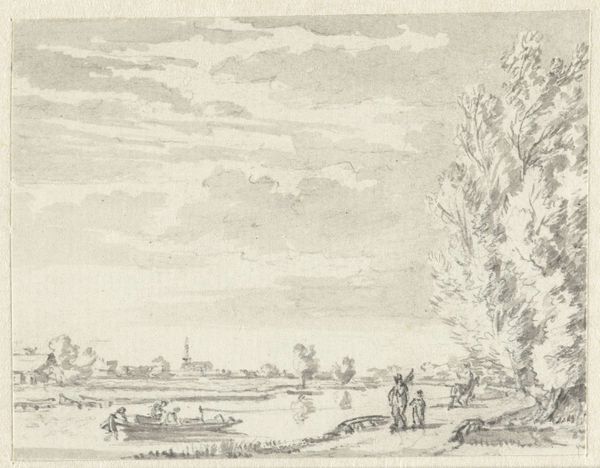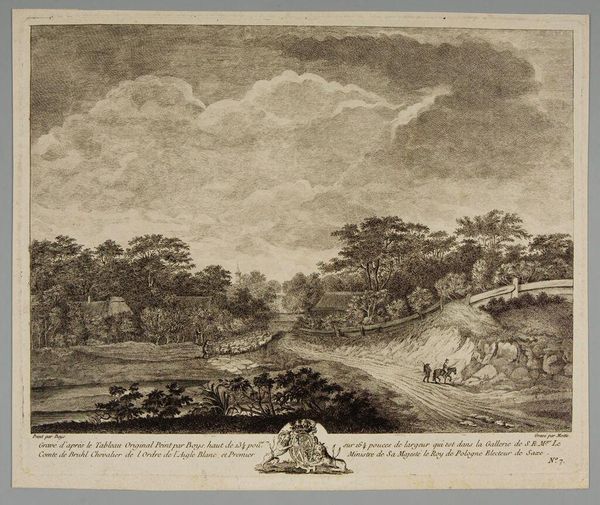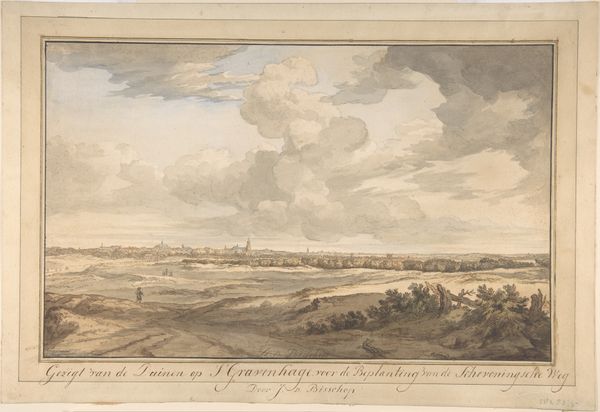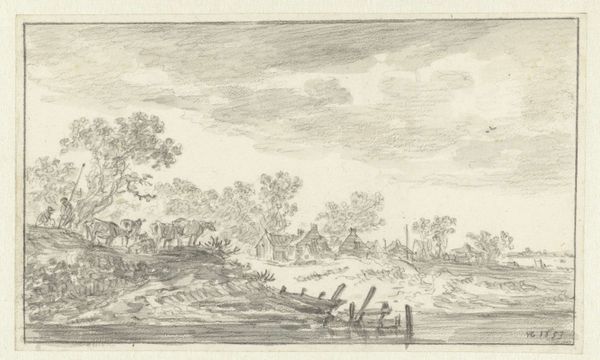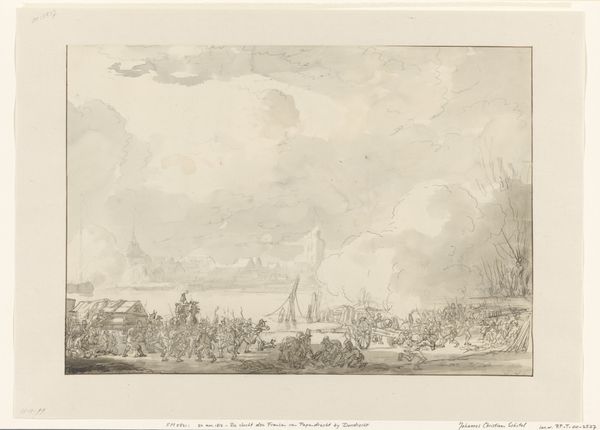
print, engraving
#
dutch-golden-age
#
neoclassicism
# print
#
old engraving style
#
landscape
#
cityscape
#
engraving
Dimensions: height 138 mm, width 231 mm
Copyright: Rijks Museum: Open Domain
Curator: Let's turn our attention to "Vijf windhozen bij Leiden, 1771," an engraving created sometime between 1771 and 1774. It depicts a landscape threatened by multiple tornadoes. Editor: My initial reaction is a feeling of dread, a premonition of disaster hanging over this otherwise pastoral scene. The sky dominates the composition, filled with tumultuous clouds. Curator: Indeed. The dramatic rendering of the clouds, juxtaposed with the serene landscape, is quite striking. Observe the careful use of line to create a sense of depth and perspective. The engraver skillfully differentiates textures, from the smooth fields to the churning skies. The labeling within the work is also crucial to its reading; it clearly depicts and spatially situates this catastrophic weather event within this region. Editor: And who exactly did create it, since it’s been deemed "Anonymous?" It forces us to consider whose stories are often untold and omitted, since this image offers a lens to investigate climate and agriculture through Dutch social history. This work resonates profoundly in an era of climate change, doesn't it? The approaching storm could mirror impending social and environmental disruption. Curator: I understand the contemporary interpretation. However, I focus on how the artist achieved such remarkable tonal variations using only lines, an approach central to printmaking. It demonstrates the technical virtuosity that was highly valued in neoclassical art. The work functions as a case study in compositional balance and visual rhetoric. Editor: But doesn’t it also depict class disparities? Notice the details - farmers in the field seem undisturbed or perhaps simply unaware. Are they indifferent to impending doom, or is their labor so demanding they cannot afford to divert attention to weather, or perhaps their lives simply matter less. These are pertinent social commentaries on visibility, privilege, and exposure. Curator: Such discussions, while relevant, pull us away from the fundamental question: how does the piece work aesthetically? Look at the subtle gradations achieved within the cloud formations themselves. These design choices directly influence our perception, regardless of any contemporary interpretation you force onto it. Editor: And regardless of yours, I find its artistic brilliance intertwined with pressing social concerns, thereby making this artwork a point of departure rather than a point of formalistic fixation. Curator: I respect your perspective. It is fascinating to note that even through differing viewpoints, we arrive at appreciating this remarkable demonstration of technique. Editor: Ultimately underscoring its power to communicate beyond eras.
Comments
No comments
Be the first to comment and join the conversation on the ultimate creative platform.
